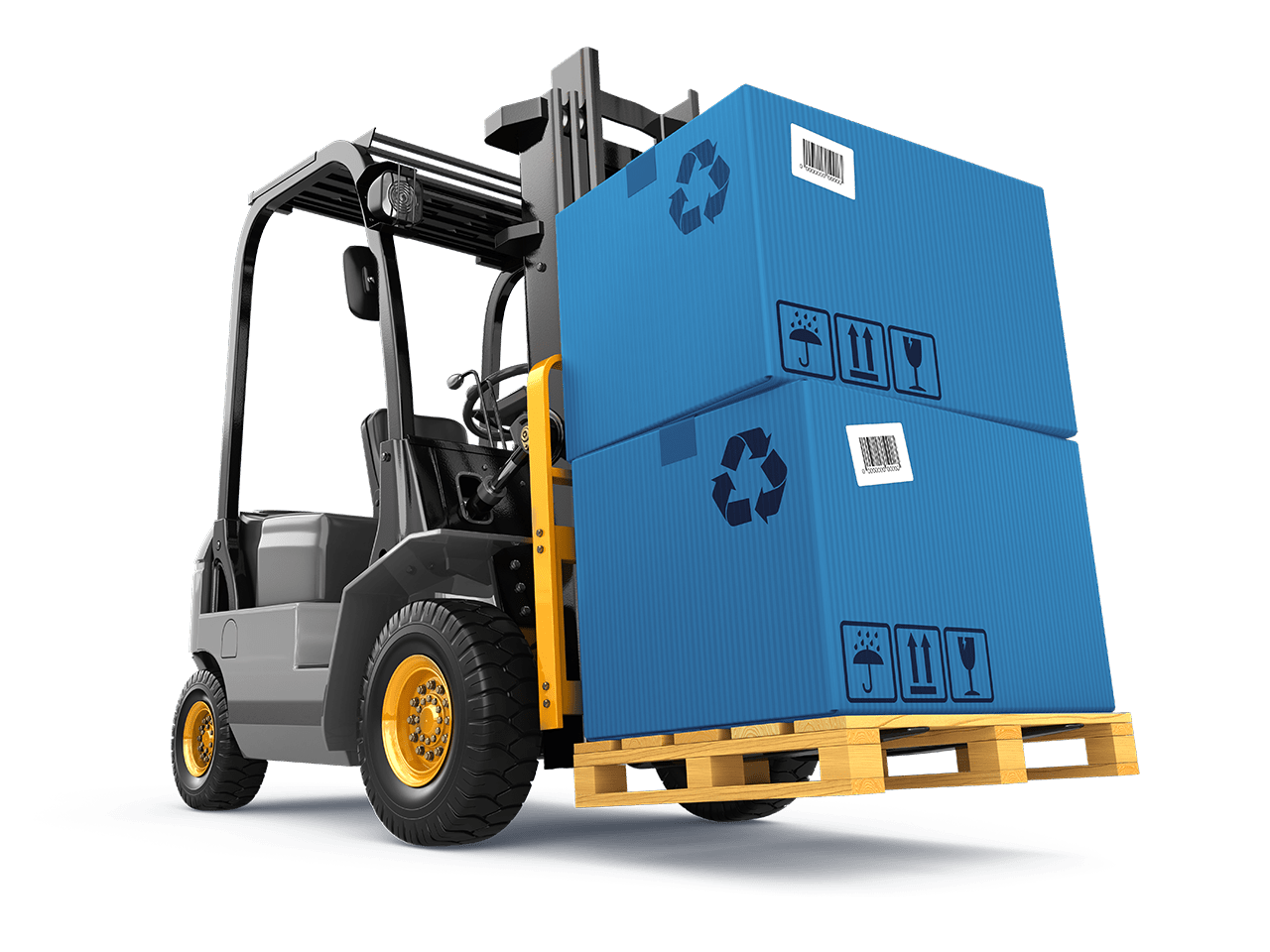The contactless, digital, automated and optimized yard as an integral part of the Supply Chain (Teil 2/3)
I presented eight future trends in yard management in the first part of my blog series “The Future of Yard Management”. In the second part, I would now like to take a closer look at two crucial ones,
because they form the basis for many other developments that will shape the smart factory site of the future: contactless and digital yard management.
Contactless yard management is essentially oriented toward completely paperless and device/app-controlled yard processing for truck drivers and the logistics personnel involved at the site. Originally developed for safety reasons (for example, to prevent accidents by ensuring that drivers leave their cabs as little as possible, etc.), the topic of “contactless yard management”, i.e., contactless or low-contact yard processing, has been given another significant boost by COVID-19.
A key driver of yard management in the future is, of course, digitalization. This, too, has made a great leap forward in many areas of the working world, not least as a result of the Corona pandemic. For example, the “Bring Your Own Device” (BYOD) approach is now being used more and more frequently. This comes as no surprise, since smartphones and tablets are standard everywhere these days.
BYOD also brings many advantages in terms of process management on the plant premises: After all, it is possible to design all relevant communication and yard processes in such a way that they can be carried out on the driver’s device without any problems. Incidentally, the installation of countless different individual apps is not required. Instead, Progressive Web Apps (PWA) move to the center of communication on the site – a big plus in terms of convenience and safety for everyone involved.
Collaboration facilitates joint planning
An important component of the yard management of the future is precise advance planning of logistics activities on the site. This also includes the joint coordination of loading and unloading dates with freight forwarders or transport service providers. The partners are integrated via corresponding web portals, where all parties involved can call up the relevant order information, book time slots and exchange documents. As a result, all process steps are documented transparently.
One core function is the synchronization of loading and unloading quotas using time slot management functions. However, it is critical to consider that the appointment booking is purely a declaration of intent by both parties.
In this respect, time slot management for capacity planning must be seen up to the arrival day of the respective transport – in reality, the arrival time can ultimately be postponed several times due to traffic jams, etc., and must therefore be dynamically factored into the planning.
Other collaborative processes include, for example, the integration of notification (e.g., which quantities are delivered at what time) and the throughput time calculation in the yard or warehouse based on the notified quantity information. Overall, collaboration between the individual business partners via digital platforms thus ensures increased transparency and greater process reliability.
Contactless login enables a more efficient and secure check-in process
When a truck arrives at the site, today it is often still registered in the traditional way – manually with the gatekeeper. Kiosk terminals are somewhat more advanced. With contactless registration, on the other hand, the driver can check in from the cab, conveniently using his own device via PWA.
If no time slot has been booked in advance, integration into the loading and unloading planning must also take place immediately upon registration. Driver instruction, briefings and other safety-related information can of course also be documented contactlessly either via app or terminal, which shortens the check-in process – and makes it safer in times of the pandemic.
Digital communication on the site removes language barriers
Especially in Europe, but also in many other countries, there are often language barriers between logistics personnel and truck drivers. Here, too, yard apps can provide valuable assistance: Information, instructions or calls to the loading gate are easily understood and scheduled via smartphone or tablet. This allows logistics personnel to communicate with drivers via device in their native language and vice versa.
Important! The use of web apps as opposed to apps permanently installed on the smartphone or tablet for communication in the yard increases the willingness to use them many times over. QR codes and free WLAN for drivers can also drastically reduce barriers to entry.
Process orchestration using real-time information optimizes utilization in the yard
Yard utilization and throughput times are influenced by a variety of factors. Often, it appears that there are primarily in-plant or in-warehouse goals to be met. These include, for example, a smoothed utilization of all yard resources during the day, low idle time or a permanent utilization of the loading points with short waiting times for the carriers. On the other hand, goals such as meeting the client’s desired delivery dates play a role in throughput optimization. Such critical deadlines must also be given priority when considering the sequence of loading.
Basically, the interaction between different systems (WMS/TMS/time window management, etc.), processes (inbound/outbound, etc.), loading point characteristics, and real-time information is of primary importance in loading point utilization. Real-time information from truck telematics systems,
but also from the integrated systems, is the basis for permanent loading bay control and thus throughput and utilization optimization on the site.
As the size of the plant site increases, the processes in the yard become more and more decoupled. An example: A driver arrives at a central parking lot and registers. A little later, he is called away and then drives to the loading point. Here, he may be buffered once again before loading begins. Only then does he receive the necessary documents, document the load securing he has previously carried out and finally check out. All of these activities can affect yard turnaround time. It is therefore important to monitor the orchestration of the entire process and, at best, to be able to reschedule automatically in the event of deviations.
Optimal loading and unloading through complete systemic mapping
Loading and unloading processes usually run in corresponding WMS or MES (Manufacturing Execution System) systems (if bulk loading is involved, e.g. of liquids, even mostly in the MES). As essential components in an optimal yard process, WMS and MES should be closely coupled with yard management in order to synchronize the individual processes in the best possible way. Here are some examples of neuralgic points between the systems:
- Matching loading point resources and transfer points (e.g., the warehouse gate): WMS and YM access the same resources.
- Planning of loading and unloading capacities including personnel, i.e. multi-level planning
- Dynamic calculation of throughput times based on products, number of load carriers, shipping, etc.
- Yard-internal movements: Do these belong to the yard or to the WMS? Are materials (inventory-managed) or only load carriers moved, or both?
- Container logistics integration: are containers serialized or not? Can technologies such as RFID or BLE achieve a holistic view of the cycles in the systems?
- Loading scanning: this can typically be done in both system worlds.
- Load securing and corresponding documentation: This can also take place in both system worlds.
The following applies to all loading and unloading processes: Systemic mapping is essential. It is therefore imperative that all bookings are synchronized between all systems and kept up to date. In this way, subsequent processes can be triggered on the basis of the corresponding system events. This complete digital mapping is the only way to enable contactless steps in the process, e.g. between truck drivers and logistics personnel on the plant premises.
Digital document exchange reduces sources of error
Even if the necessary legal framework has not yet been created in all countries, all papers will be exchanged electronically in the future – at the latest, the way will then be paved automatically for contactless, digital exchange. After all, important documents such as the loading list, delivery bills and freight documents are already increasingly being accepted digitally today.
Yard management systems must therefore be able to support, trigger and enrich document exchange.
In addition, it must also be possible to create documents directly from Yard Management or to store them there, if required.Of course, the issue of data security plays an important role here, since the relevant documents should be made available to the respective partners in accordance with the process.
When documents are exchanged manually, the latter often still have to be printed as a kind of self-service at a kiosk, which delays the process overall. This is still often the case today for export documents and the like.
Thanks to digital check-out, trucks leave the factory premises more quickly
Finally, the check-out takes place – either with the help of the yard app or at the terminal. At this point at the latest, digital or traditional paper documents can be issued and forwarded to the driver and the relevant freight forwarder. Once again, identification takes place using a central QR code that ties all yard activities together.
Checklist: Here's what's needed for the contactless trucking process
- Web-based enterprise portal for communication with carriers, suppliers, customers
- Interfaces for integration of WMS/TMS or ERP processes
- Time slot management
- Loading point control
- Mobile apps
- Login
- Call-off
- Navigation/process control on the site
- Yard cockpit/yard list
- Yard designer
- Yard visualizer
- Digital document exchange (eBOL/eCMR)
- KPIs / reporting
- Flexible workflows

Outlook: These future topics can be realized with smart yard management
The introduction of digital and contactless yard management not only brings significantly greater safety for logistics personnel and truck drivers in light of the Corona pandemic. It also leads to increased transparency, greater process reliability and often more efficient plant processes in general.
However, the implementation of such smart yard management is by no means the end of the story. Once site logistics have been comprehensively digitalized, further potential for the future opens up, e.g., for automation. Many processes, such as loading point control, can be further optimized using information such as real-time ETA (Estimated Time of Arrival). Automated MAFI truck control is also easily conceivable if yard management is fully digitalized and all the necessary information is fed into the system.
Check apps, e.g., for securing loads or for dangerous goods checks, are an obvious choice. The next step in check-in at the factory gate could be OCR recognition via camera, which can already identify trucks based on the license plate. IoT sensor technology can be used to intelligently monitor containers, for example, to report temperature fluctuations that could mean a loss of quality for certain goods. Finally, permanent loading point optimization with identification of options for capacity utilization optimization based on data is no longer a problem.
We are here for you!
It is worth taking a closer look at the topic of smarter yard management and its potential. Current technologies offer excellent opportunities to make processes around the site more efficient and, above all, safer for everyone involved.
Have we piqued your interest? Then please do not hesitate to contact us. If you have any questions about this or other topics in the blog, please contact blog@leogistics.com.
André Käber
CEO leogistics GmbH
Sorry, we couldn't find any posts. Please try a different search.
BLOG &
NEWS
Latest news and blog posts from the world of intelligent supply chain management.





